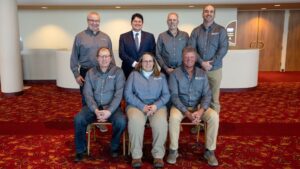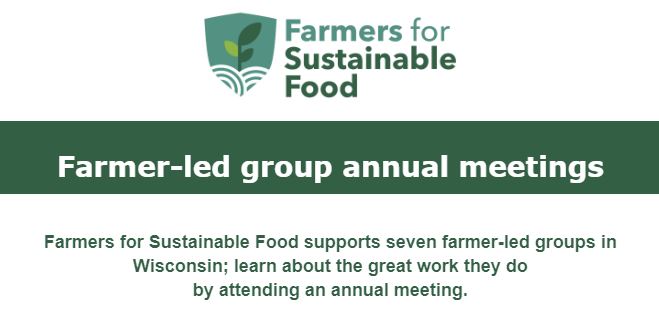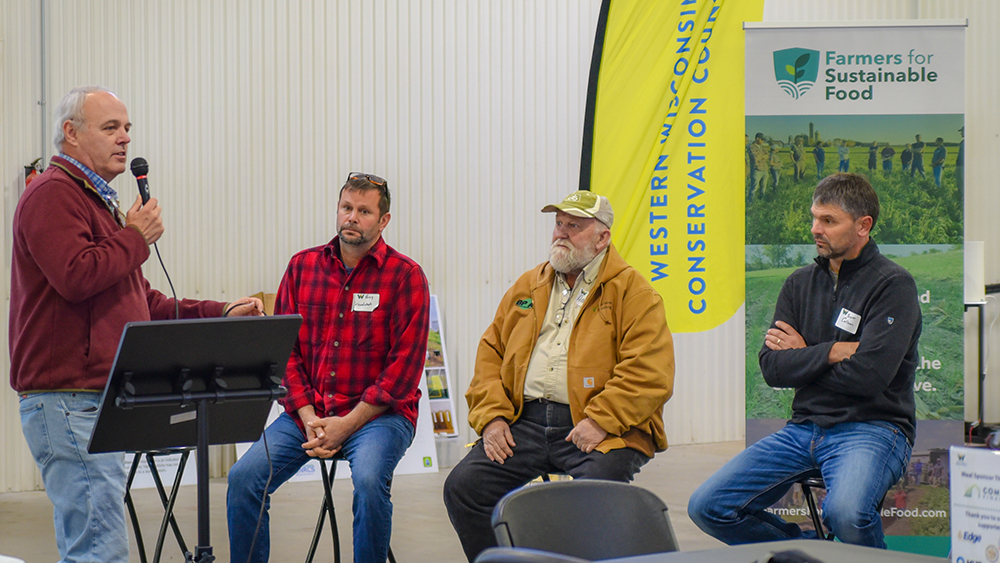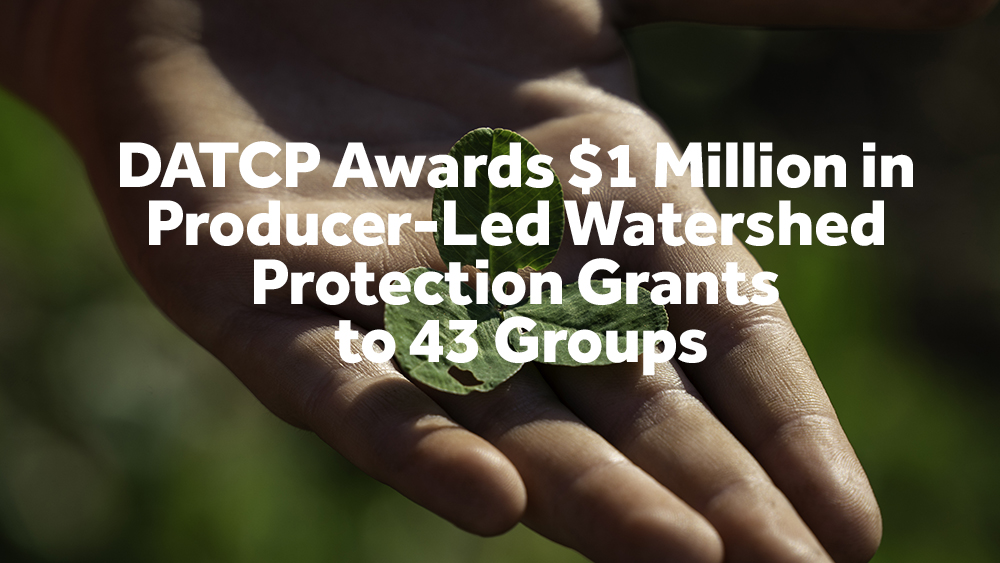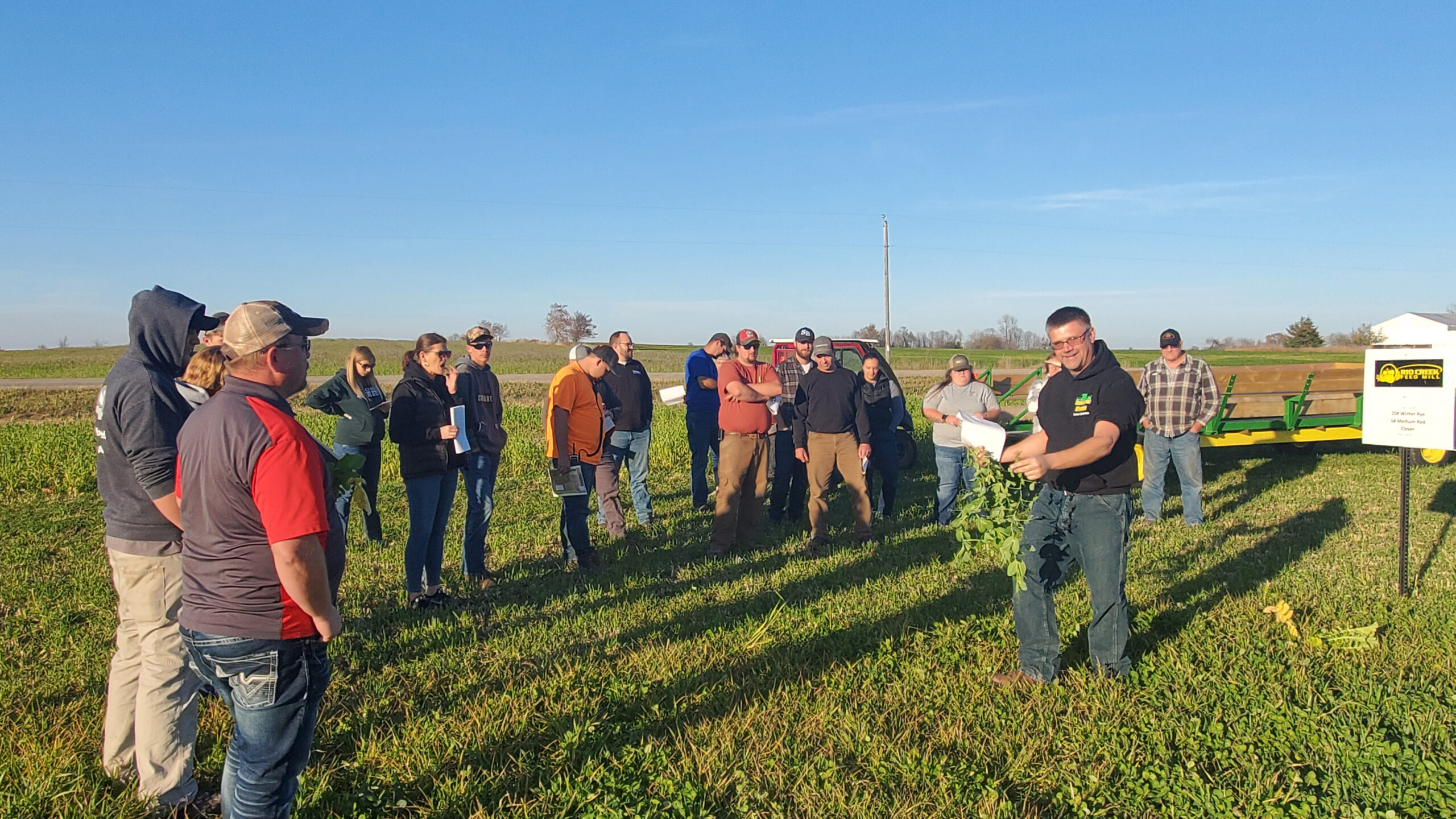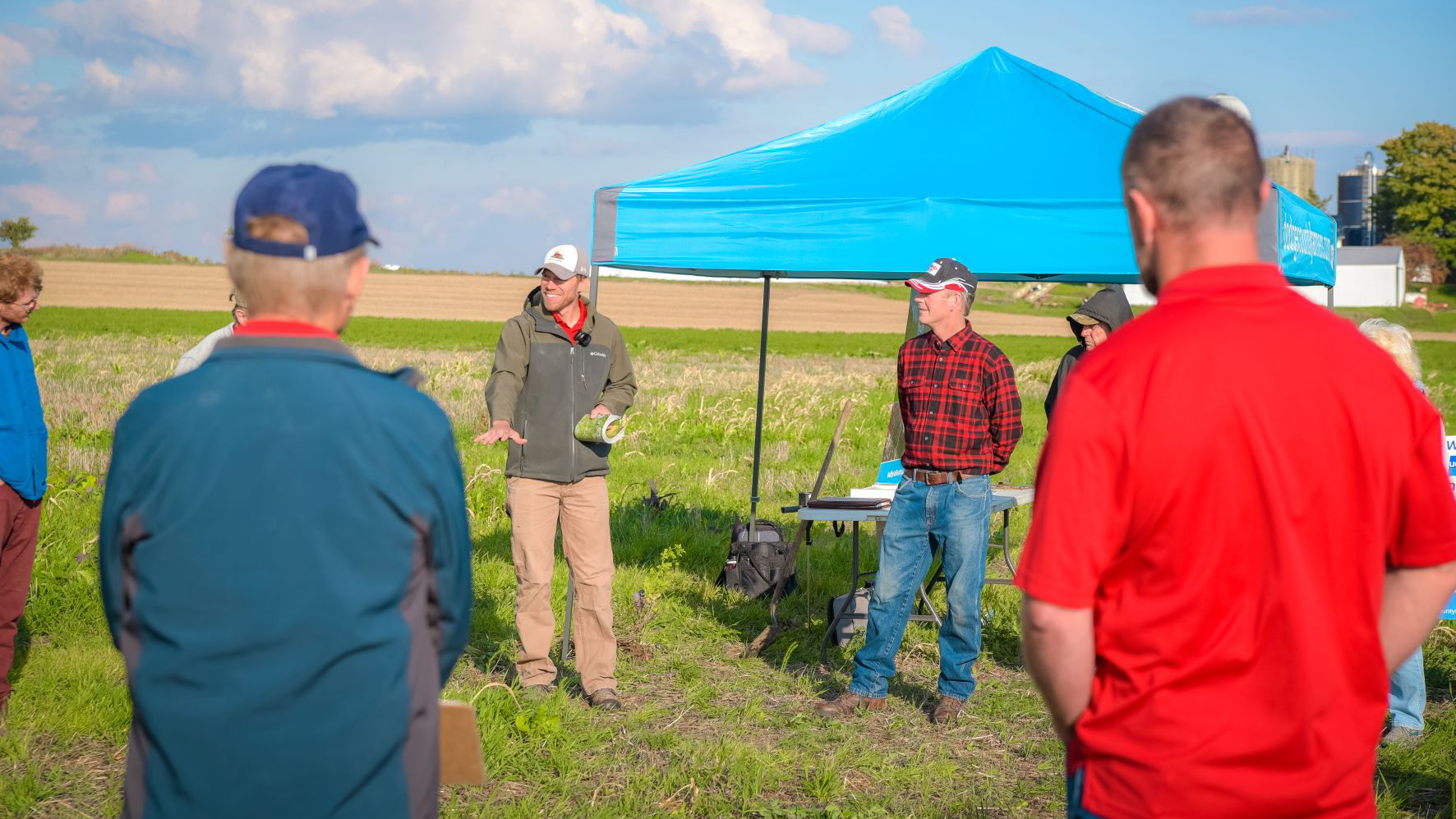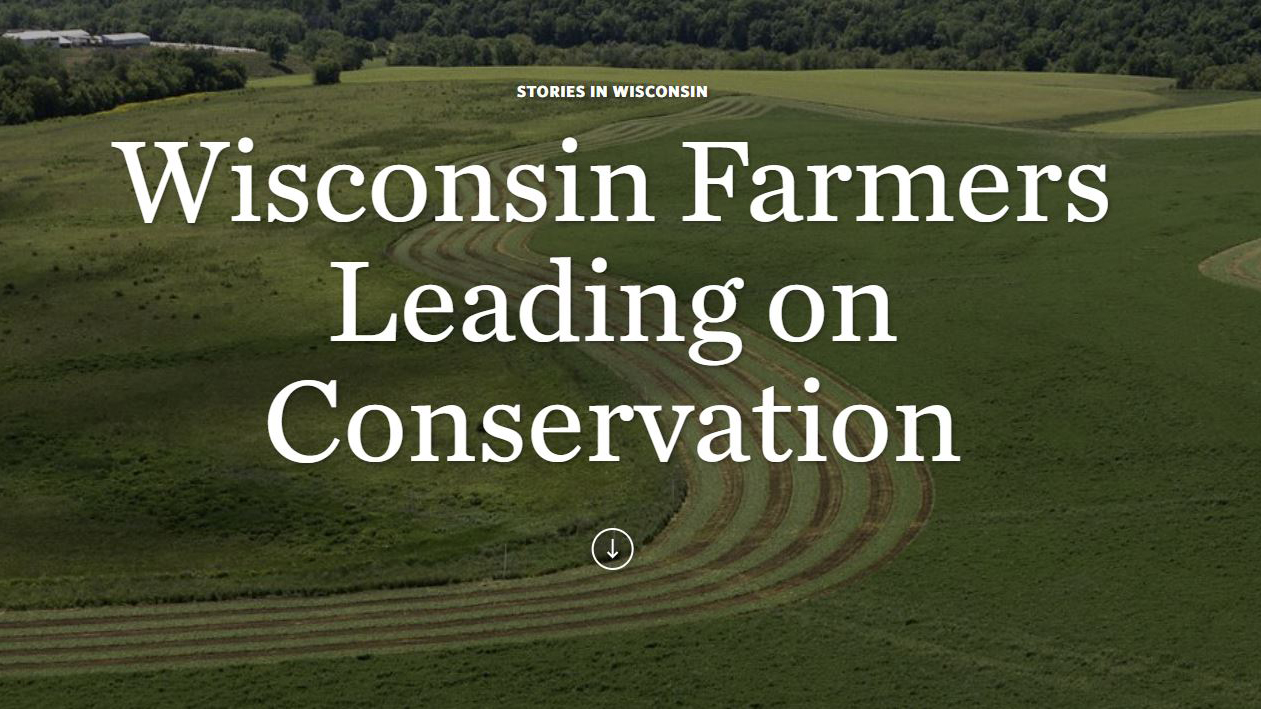Producing milk, corn, soybeans, and the many other foods people depend on while protecting the environment is challenging. But Wisconsin farmers are used to problem-solving; they have been doing it for generations.
A new online resource (nature.org/WIFarmersLead) tells the stories of five Wisconsin farm families who have joined with other farmers in local, producer-led, nonprofit groups to accelerate their adoption of conservation practices in their watersheds by working together.
Wisconsin may be unique in setting up a Producer-led Watershed Protection Grant Program through the Department of Agriculture, Trade, and Consumer Protection that gives farmers a way to form their own watershed-based organizations, apply for cost-share grants and work with other professionals to take some of the financial risks out of trying new ways to farm that benefit the environment and their operations.
“The producer-led groups have been a bright spot in conservation in Wisconsin. The Program has provided the framework for farmers to be leaders in watershed conservation and really supports farmers to learn from and innovate among other farmers in their group or other producer-led groups across the state,” says Dana Christel, DATCP Producer-led Watershed Protection Grant Program manager.
In this online resource, five farmers talk about the practices they are implementing, the benefits they are seeing and how their involvement in farmer-led groups increases their ability to innovate and track progress on their environmental goals while benefiting their farm businesses.
Bob Danes, New Holstein in Calumet County
Bob Danes and his family own and operate a 3,900-acre cash crop farm, grain cleaning business, and trucking enterprise near New Holstein. Danes is a member of the Calumet County Ag Stewardship Alliance.
The Danes family has about 2,000 acres of cover crops, which they began planting in 2012. Planting green—the practice of no-till planting conventional crops into living cover crops—is also now a common practice on the farm.
“With heavy rain, we were seeing a lot of soil washing away along with all the nutrients the plants need,” Danes says. “With these changes, we now see the soil staying in place.”
Steve Carpenter, Darlington in Lafayette County
Steve Carpenter, a third-generation dairy farmer near Darlington in Lafayette County, and his family milk 600 cows and farm 2,000 acres of corn, alfalfa, and soybeans. Steve helped form the Lafayette Ag Stewardship Alliance (LASA) and is the group’s vice-president.
One of the conservation practices Steve tries on the fields where he has soil compaction issues is vertical tillage. This type of tillage reduces disturbance to the soil by cutting into it vertically rather than pulling or dragging the blades through the soil.
“I learn something from other farmers at every LASA meeting and field day,” he says. “I see what people are trying, listen to how they’re doing it, and learn from their successes and their mistakes.”
Leslie Svacina, Deer Park in St. Croix County
Leslie Svacina and her family farm Cylon Rolling Acres, which covers 140 acres and is home to a herd of up to 200 meat goats and a small flock of sheep. Svacina is a member of the Western Wisconsin Conservation Council.
“I think no matter how you farm, what you farm, or where you’re at in your conservation practice journey, it’s important to always learn and improve upon what you’re doing,” she says. “It can be little steps over time that can build to make a big difference.”
Svacina utilizes rotational grazing with her livestock, moving the herd to new pasture paddocks every few days. This grazing method adds cover to the soil surface and organic matter as trampled plants break down. Goat manure and urine provide fertilizer for the soil, which then feeds the soil microbes.
The Guilette Family, Casco in Kewaunee County
Guilette Farms has been in the family for four generations. They grow corn, soybeans, and wheat on 300 acres. Nick Guilette is on the board of directors of Peninsula Pride Farms and an advisor with the Door-Kewaunee Watershed Demonstration Farm Network.
He says these groups are important because: “What we want to avoid is having a farmer try something that’s a good practice, fail miserably at it, and never want to try it again.”
The Guilettes are no-tilling and planting cover crops like radishes, barley, and crimson and red clover. They are also creating pollinator habitats on parts of their farm that were less productive for conventional crops. In addition to supporting bees and other pollinators, these habitats help to reduce wind erosion, stabilize soil, and improve water quality
Travis Luedke, Plymouth in Sheboygan County
Travis Luedke runs his family’s 650-acre farm with his parents, Warren and Linda, and girlfriend, Jen. They raise corn, beans and winter wheat and have been no-tilling for about 20 years. Luedke is a founding member and current treasurer of Sheboygan River Progressive Farmers (SRPF).
Three years ago, they began strip-tilling after hosting an SRPF field day on their farm.
“This is a process of tilling and fertilizing only where the seed is put in,” Luedtke says. “It keeps the seed and fertilizer exactly where it needs to be, and by doing this, we can grow a better crop using less fertilizer.”
“Field days are not the same as reading about something in a book. As you listen to others, your mind wanders to the possibility of trying some of these new things yourself and getting similar results.”
Farmers for Sustainable Food and The Nature Conservancy are collaborators with all five of the farmer-led groups highlighted in the online resource.
“Farmers have long been stewards of the environment, and the farmers highlighted in this series are just a small example of this,” said Lauren Brey, managing director of Farmers for Sustainable Food, a nonprofit organization of food system partners. “Every day, our team’s top priority is finding ways to best support farmers in their conservation goals and helping them succeed.”
“The work these farmers and their peers in farmer-led groups are doing to implement soil health practices and share what they are learning with others shows that agriculture can be part of the solution to some of our biggest challenges, from water quality to climate change,” said Steve Richter, agriculture strategies director for The Nature Conservancy in Wisconsin. “We’re excited to support them in their efforts to protect our waters, capture carbon, and keep their farms profitable.”
About the Producer-led Watershed Protection Grants Program:
The Wisconsin Department of Agriculture, Trade & Consumer Protection (DATCP) provides funding to producer-led groups that focus on non-point source pollution abatement activities through the Producer-led Watershed Protection Grant Program. This program supports producer-led conservation solutions by encouraging innovation through partnerships, on-farm demonstrations, and flexible cost-share programs while emphasizing farmer-to-farmer learning and outreach to improve Wisconsin’s soil health and water quality. More information: https://datcp.wi.gov/Pages/Programs_Services/ProducerLedProjects.aspx
About The Nature Conservancy:
The Nature Conservancy is a global conservation organization dedicated to conserving the lands and waters on which all life depends. Guided by science, we create innovative, on-the-ground solutions to our world’s toughest challenges so that nature and people can thrive together. In Wisconsin, we help farmers improve soil health and protect clean water while sustaining profitability. We also collaborate with communities, governments, business and other nonprofits to protect Wisconsin’s most outstanding natural areas, address climate change and its impacts, and help make cities more sustainable. To learn more, visit www.nature.org/wisconsin.
About Farmers for Sustainable Food:
Farmers for Sustainable Food is a collaborative, industry-supported effort to promote and support farmer-led solutions to today’s environmental challenges. The nonprofit organization empowers farmers to develop and implement practical, innovative solutions for environmental, economic and social good. More information: www.FarmersForSustainableFood.com
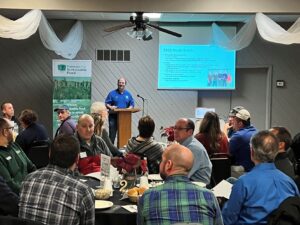 CCASA president John Schwarz shared the group’s accomplishments from 2022. The group has grown to 23 members, hosting three events last year — including a farm tour with Governor Evers. It offered another year of cost-share programs supported by DATCP and The Nature Conservancy. The group’s goals for 2023 consist of continuing cost-share programs, well-testing, increasing membership and its member conservation practice survey.
CCASA president John Schwarz shared the group’s accomplishments from 2022. The group has grown to 23 members, hosting three events last year — including a farm tour with Governor Evers. It offered another year of cost-share programs supported by DATCP and The Nature Conservancy. The group’s goals for 2023 consist of continuing cost-share programs, well-testing, increasing membership and its member conservation practice survey.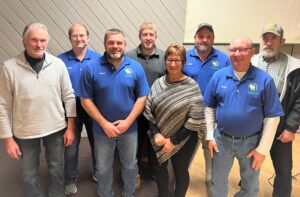

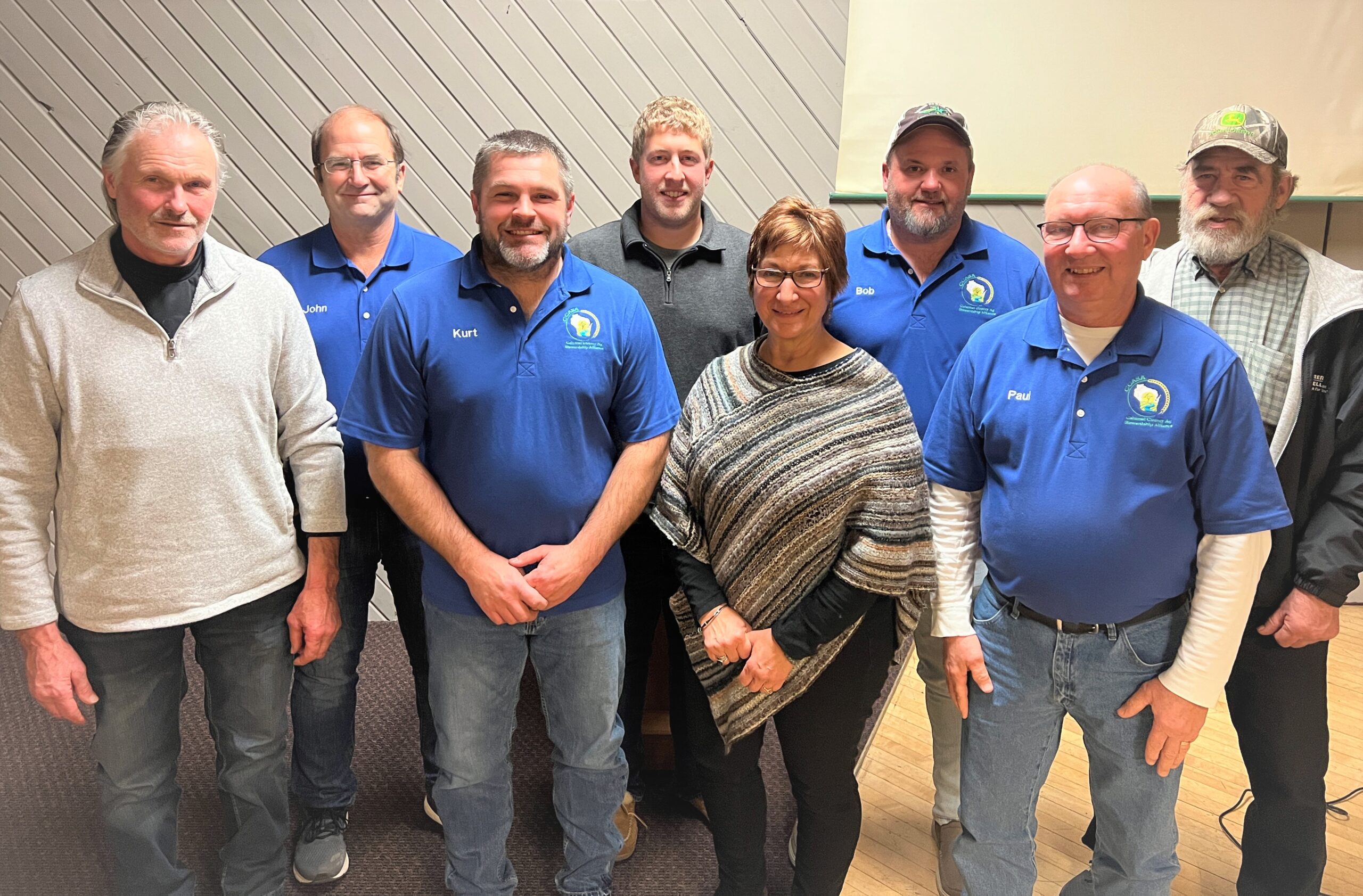
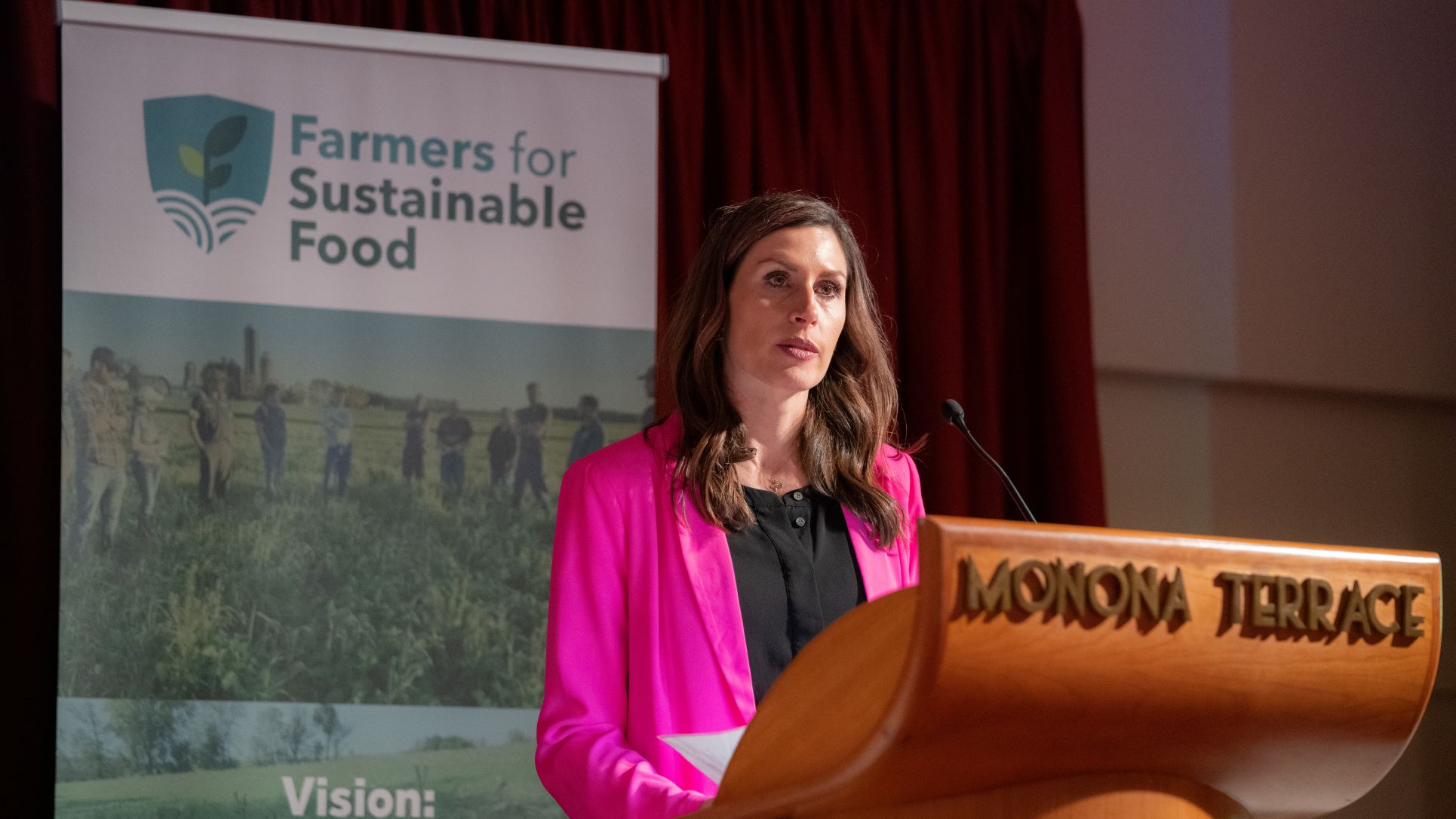
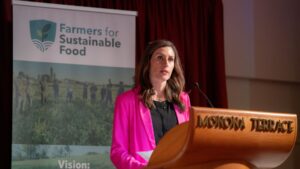 FSF continues to show growth not only through farmers and acres but also with projects, including expanding into the animal care space, and conservation practices implemented throughout the Upper Midwest.
FSF continues to show growth not only through farmers and acres but also with projects, including expanding into the animal care space, and conservation practices implemented throughout the Upper Midwest.